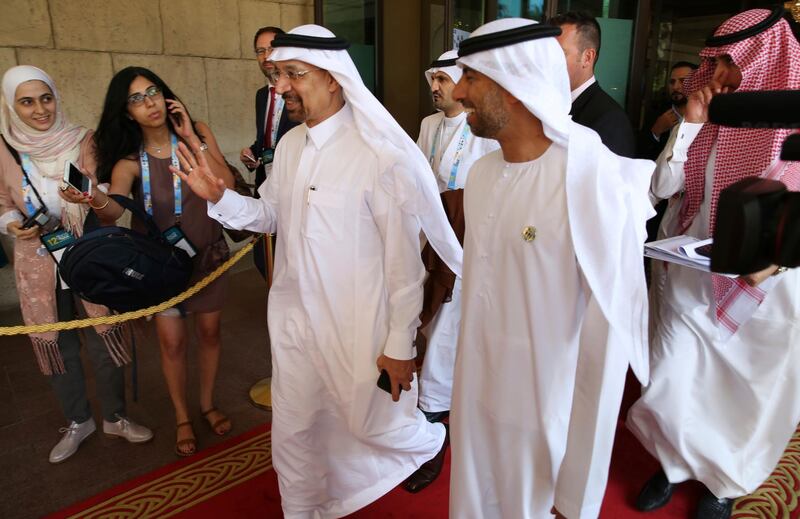The Opec+ alliance has been credited with rebalancing an oil market awash with crude from rising US shale production amid tepid global demand as economic growth falters. We take a look at this precedent-setting group of oil producers.
What is the Opec+?
Opec+ refers to the alliance of crude producers, who have been undertaking corrections in supply in the oil markets since 2017. Currently, there are 21 sovereign producing nations complying with the alliance's decisions, with Saudi Arabia leading the 11 Opec members party to the deal and 10 non-Opec members led by Russia.
What are their goals?
The Opec and non-Opec producers first formed the alliance at a historic meeting in Algiers in 2016 with the expressed aim to undertake production restrictions to help resuscitate a flailing market.
Oil prices had crashed to a low of $29 per barrel at the start of 2016, down from over $115 per barrel in mid-2014. The alliance kept their output low and compliance high and managed to revive prices through much of last year, maintaining low crude inventory levels. High levels of inventory buildup had been the major factor behind the earlier bearish market.
Does the alliance only cut production?
No, the alliance reversed their production cuts mid-2018 to increase output. The measure was undertaken after consistent cuts led to higher prices in the range of $75 per barrel, which received push back from oil importers as well as the US President. The Donald Trump administration subsequently nudged Opec to consider increasing output to bring down prices particularly during the US peak driving season and approaching mid-term elections in November.
Is the alliance still boosting production?
No, Opec+ decided to slash production by 1.2 million barrels per day for six months starting January 2019. The reversal of their earlier pact to boost output was a response to the sudden fall in oil prices in November. Prices, which surged to a three-year high of $86.29 in October, plunged the following month as an increase in US supply and minimal impact from the US re-imposition of sanctions against Opec-member Iran all led to lower prices.
Are all Opec members cutting production?
Opec’s compliance with the latest round of output curbs is not as stringent as before. Compliance for February was only 89 per cent compared with above 100 per cent levels seen last year. Russia, the main non-Opec producer, has not been very compliant with cuts, while Opec members such as Iran and Venezuela are not participating due to sanctions and geopolitics-related loss of production in their countries.







